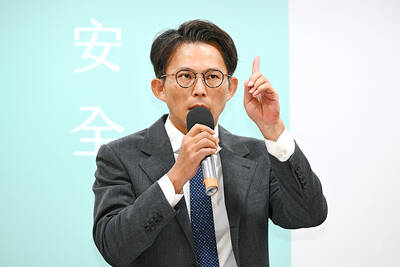If you want to witness the last vestiges of human intellect swirling down the drain, hold your nose and type the words “skibidi toilet” into YouTube. The 11-second video features an animated human head protruding from a toilet bowl while singing the nonsensical lyrics “skibidi dop dop dop yes yes.” The clip has been viewed more than 215 million times, and spawned hundreds of millions of references on TikTok and other social media.
Fitting, then, that the Oxford word of the year has just been announced as “brain rot.” As an abstract concept, brain rot is something we’re all vaguely aware of. The dictionary defines it as “the supposed deterioration of a person’s mental or intellectual state, especially viewed as the result of overconsumption of material (now particularly online content) considered to be trivial or unchallenging.” But few people are aware of how literally technology is rotting our brains, and how decisively compulsive Internet use is destroying our gray matter.
Brain rot was portended almost 20 years ago when scientists studied the effects of a new invention called “e-mail,” specifically the impact a relentless barrage of information would have on participants’ brains. The results? Constant cognitive overload had a more negative effect than taking cannabis, with IQs of participants dropping an average of 10 points.

Photo: AFP
LIVING ONLINE
And this was prior to smartphones bringing the Internet to our fingertips, which has resulted in the average UK adult now spending at least four hours a day online (with gen Z men spending five and a half hours a day online, and gen Z women six and a half).
In recent years, an abundance of academic research from institutions including Harvard medical school, the University of Oxford and King’s College London found evidence that the Internet is shrinking our gray matter, shortening attention spans, weakening memory and distorting our cognitive processes. The areas of the brain found to be affected included “attentional capacities, as the constantly evolving stream of on-line information encourages our divided attention across multiple media sources,” “memory processes” and “social cognition.”
Paper after paper spells out how vulnerable we are to Internet-induced brain rot.
“High levels of Internet usage and heavy media multitasking are associated with decreased gray matter in prefrontal regions,” finds one.
‘DIGITAL DEMENTIA’
People with Internet addiction exhibit “structural brain changes” and “reduced gray matter.” Too much technology during brain developmental years has even been referred to by some academics as risking “digital dementia.”
In 2018, a decade of data analyzed by leading memory psychologists at Stanford University found that people who frequently engaged with multiple online platforms have reduced memory and attention spans.
And yet we seem to be doing very little to stem the tide. Earl Miller, an MIT neuroscientist and world expert on divided attention, warned in 2022 that we are now living in “a perfect storm of cognitive degradation.”
Gloria Mark, professor of informatics at the University of California and author of Attention Span, has found evidence of how drastically our ability to focus is waning. In 2004, her team of researchers found the average attention span on any screen to be two and a half minutes. In 2012, it was 75 seconds. Six years ago, it was down to 47 seconds.
This “is something that I think we should be very concerned about as a society,” she told a podcast last year.
But we’re not entirely to blame if technology is making us less intelligent. After all, it was designed to captivate us totally. Silicon Valley’s dirtiest design feature — which is everywhere once you spot it — is the infinite scroll, likened to the “bottomless soup bowl” experiment, in which participants will keep mindlessly eating from a soup bowl if it keeps refilling. An online feed that constantly “refills” manipulates the brain’s dopaminergic reward system in a similar way. These powerful dopamine-driven loops of endless “seeking” can become addictive.
What will happen if we don’t get a handle on our declining cognitive health? The former Google design ethicist Tristan Harris told US Congress in 2019 that billions of people — “a psychological footprint about the size of Christianity” — now receive their information from platforms whose business model “links their profit to how much attention they capture, creating a ‘race to the bottom of the brain stem’ to extract attention by hacking lower into our lizard brains — into dopamine, fear, outrage — to win.”
His warnings are about as stark as they come.
“Persuasive technology is a massively underestimated and powerful force shaping the world,” he said. “It has taken control of the pen of human history, and will drive us to catastrophe if we don’t take it back.”
The term brain rot was popularized online by young people who are most at risk of its effects. The fact that those who are most at risk have the most self-awareness of the problem is heartening news. The first step towards any change is understanding the problem. And there is cause to be hopeful. In recent years, anti-technology movements have gained traction, from teenagers turning to dumbphones to campaigns for a smartphone-free childhood; green shoots for a future in which we are able to reclaim our minds. So perhaps there’s more poignant meaning to Skibidi Toilet, after all: an awareness of where human intelligence currently sits. It can now go in one of two directions: up, or round the U-bend.

Before the recall election drowned out other news, CNN last month became the latest in a long line of media organs to report on abuses of migrant workers in Taiwan’s fishing fleet. After a brief flare of interest, the news media moved on. The migrant worker issues, however, did not. CNN’s stinging title, “Taiwan is held up as a bastion of liberal values. But migrant workers report abuse, injury and death in its fishing industry,” was widely quoted, including by the Fisheries Agency in its response. It obviously hurt. The Fisheries Agency was not slow to convey a classic government

Not long into Mistress Dispeller, a quietly jaw-dropping new documentary from director Elizabeth Lo, the film’s eponymous character lays out her thesis for ridding marriages of troublesome extra lovers. “When someone becomes a mistress,” she says, “it’s because they feel they don’t deserve complete love. She’s the one who needs our help the most.” Wang Zhenxi, a mistress dispeller based in north-central China’s Henan province, is one of a growing number of self-styled professionals who earn a living by intervening in people’s marriages — to “dispel” them of intruders. “I was looking for a love story set in China,” says Lo,

It was on his honeymoon in Kuala Lumpur, looking out of his hotel window at the silvery points of the world’s tallest twin skyscrapers, that Frank decided it was time to become taller. He had recently confessed to his new wife how much his height had bothered him since he was a teenager. As a man dedicated to self-improvement, Frank wanted to take action. He picked up the phone, called a clinic in Turkey that specializes in leg lengthening surgery — and made a booking. “I had a lot of second thoughts — at the end of the day, someone’s going

The next few months will be critical in determining the future of the Taiwan People’s Party (TPP). Following party founder Ko Wen-je’s (柯文哲) arrest in September last year, Huang Kuo-chang (黃國昌) effectively became the de facto face of the party and officially became chairman in January. While Ko frequently criticized the ruling Democratic Progressive Party (DPP) and insinuated sinister intentions on the part of the DPP’s New Tide faction, his era was largely defined by the TPP slogan “rational, pragmatic, scientific,” albeit defined largely by his definition of what that meant. The tone and language used by the TPP changed dramatically